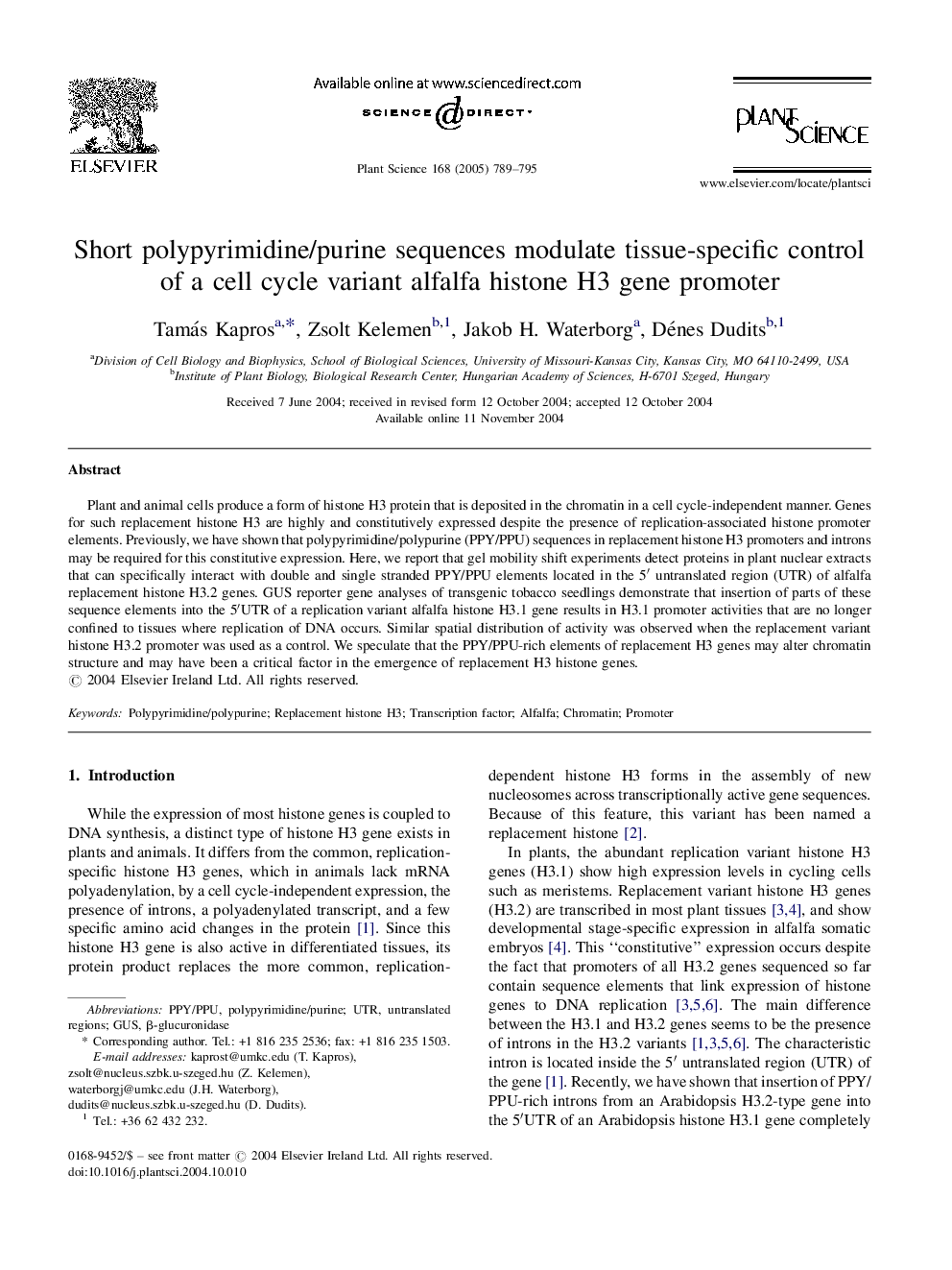| Article ID | Journal | Published Year | Pages | File Type |
|---|---|---|---|---|
| 10841202 | Plant Science | 2005 | 7 Pages |
Abstract
Plant and animal cells produce a form of histone H3 protein that is deposited in the chromatin in a cell cycle-independent manner. Genes for such replacement histone H3 are highly and constitutively expressed despite the presence of replication-associated histone promoter elements. Previously, we have shown that polypyrimidine/polypurine (PPY/PPU) sequences in replacement histone H3 promoters and introns may be required for this constitutive expression. Here, we report that gel mobility shift experiments detect proteins in plant nuclear extracts that can specifically interact with double and single stranded PPY/PPU elements located in the 5â² untranslated region (UTR) of alfalfa replacement histone H3.2 genes. GUS reporter gene analyses of transgenic tobacco seedlings demonstrate that insertion of parts of these sequence elements into the 5â²UTR of a replication variant alfalfa histone H3.1 gene results in H3.1 promoter activities that are no longer confined to tissues where replication of DNA occurs. Similar spatial distribution of activity was observed when the replacement variant histone H3.2 promoter was used as a control. We speculate that the PPY/PPU-rich elements of replacement H3 genes may alter chromatin structure and may have been a critical factor in the emergence of replacement H3 histone genes.
Related Topics
Life Sciences
Agricultural and Biological Sciences
Plant Science
Authors
Tamás Kapros, Zsolt Kelemen, Jakob H. Waterborg, Dénes Dudits,
